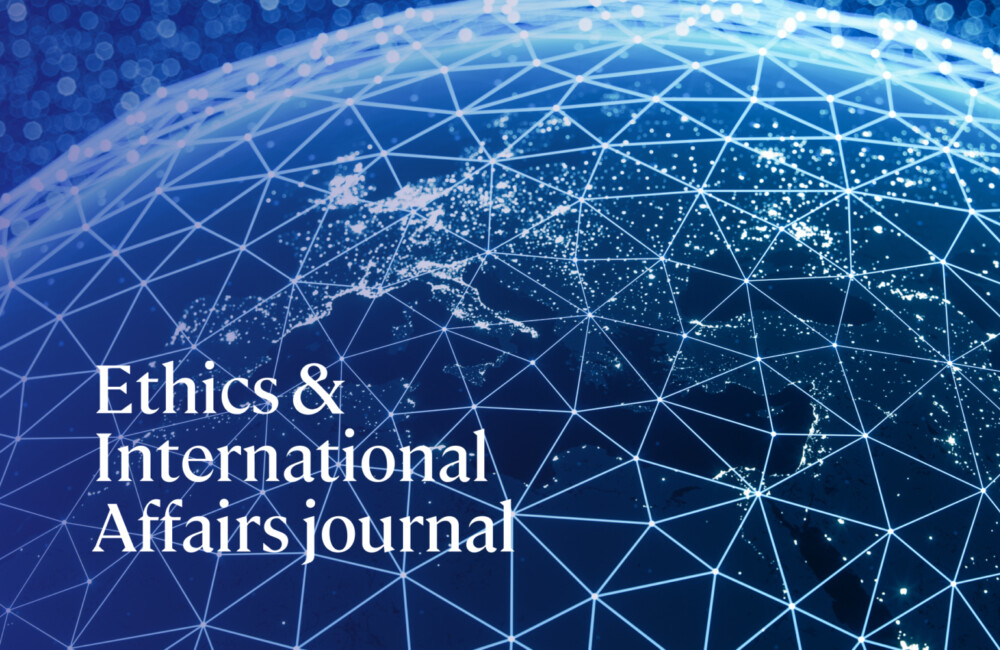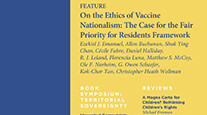Those who have grown tired of doomsday scenarios about the environment would do well to pick up a copy of Environmentality. This book, an engaging and groundbreaking investigation of environmental politics and how people come to care for the environment, while not a call to arms, signals that change may already be on the way.
Drawing upon extensive fieldwork and archival research of forest protection in forty villages of Kumaon in Northern India, Arun Agrawal, Associate Professor in the School of Natural Resources and the Environment at the University of Michigan, traces how these rural communities came to be willing and active agents of decentralized environmental regulation and to embrace principles of forest conservation. He demonstrates that dispersing power, knowledge, and regulation—and thereby creating more “intimate forms of regulation”—can lead to changes in the way people understand their place and actions in relation to something that they define as “the environment.” This shift toward localizing regulatory power, which is taking place in more than fifty countries by Agrawal’s count, is a message of hope for the environment and for humankind.
Agrawal’s thesis and approach are signaled by his carefully chosen title. "Environmentality" gestures at Foucault’s later work on governmentality, which aims to “understand and describe how modern forms of power and regulation achieve their full effects not by forcing people toward state-mandated goals but by turning them into accomplices” (p. 217). “Environmentality,” a term of Agrawal’s own invention, refers to the creation of environmental subjects along with the emergence of the “environment” as a domain that requires regulation and protection.
The Kumaon region in the Himalayas is the site of the fabled Chipko movement, which began in 1973 when villagers organized for the restoration of forest rights and which quickly spread throughout India. Agrawal’s interest is not in the movement, however, but in an earlier historical development: the creation of village-level forest councils. An outgrowth of political negotiations following widespread and sometimes violent village uprisings in the 1920s against the British colonial state’s creation of forest reserves, the forest councils now number over 3,000 and constitute one of the earliest surviving attempts to secure public participation in the preservation of forests. In his detailed historical account of the events leading to the creation of the reserves by the colonial state during 1911–16, Agrawal describes the application of a “new technology of government”—policy tools for environmental management—to bring the forests under central control in order to sustain the supply of timber and its products, which by the second half of the nineteenth century had become an increasingly important source of state revenue. Initially, government technology to protect the forests relied solely upon the classification and use of statistics to characterize forests, thereby creating an environmental sphere as a “domain fit for government.” The imposition of new rules rendered illegal many of the subsistence practices of shifting cultivators, graziers, villagers, and local merchants, and existing rules were enforced more strictly. The locals who relied on forests for their livelihoods perceived these policies as a denial of their rights, resulting in massive protest through the setting of fires. Even the village headman appointed by the colonial government, resisted cooperation with the regime.
The new technology of the forest councils had three important effects: first, the creation of decision-making within localities, which significantly increased local people’s power vis-à-vis the state; second, the creation of “regulatory communities” within localities where social actions could take form; and three, the creation of “environmental subjects”—people who came to think in new ways about the importance of the environment to their lives. The achievements of the forest councils created to resolve this crisis, by Agrawal’s account, are most impressive:
- Today decision makers within the community use their intimate knowledge about members of the community to ensure that power is wielded neither too forcefully nor too weakly. They don’t want to provoke protests or be rendered ineffective. Community regulation operates more constantly, consistently, effectively and transformatively on its objects: village residents. Regulation is more comprehensive but less costly, more modulated but less visible, more autonomous but more continuous, more precise, and perhaps, for that reason, more humane. (p. 93)
Third, Agrawal encourages a reconsideration of the relationship between beliefs and practices. Against the common assumption that beliefs determine practice, Agrawal draws upon his data to show that it is often precisely the opposite: beliefs and knowledge are developed through practice. People come to act in response to a situation about which they often have little control. In experiencing that act and its outcome they often find that earlier beliefs were mistaken, and they change them. Agrawal writes: “Environmental practice . . . is the key link between the regulatory rule that government is all about and the imaginations that characterize particular links” (p. 167). A key lesson of the Kumaon story is that policies that successfully promote environmental values are more likely to be prompted by concerns for the fair distribution of resources and the political recognition of a community than a concern for preservation, which is instead developed in the process of implementing those policies.
In the concluding chapter, Agrawal acknowledges scholarly contributions to environmental politics and so helps his readers to navigate the environmental studies literature. In his assessment, the fields of conservation biology, environmental anthropology, environmental ethics, environmental sociology, historical ecology, and social ecology are of little help, since their main purpose appears to be to convince mainstream historians, sociologists, political scientists, and anthropologists of the benefits to their disciplines of paying greater attention to the environment. Instead, he points to the cross-disciplinary fields of political ecology, scholarship on the commons, and feminist environmentalism as the most helpful in the direct attention they give to how institutions, politics, and identities affect environmental policy processes and outcomes. At the same time he highlights the shortcomings of these approaches in their failure to focus adequately on the changes in actions and beliefs of environmental subjects. Only feminist environmentalists (aside from scholars who focus on indigenous peoples) pay adequate attention to identity—with the drawback that their concern is strictly with gender.
Using carefully constructed arguments, Agrawal successfully achieves his purpose of creating a framework for environmental policy analysis. One only wishes the message was in a language and form that would easily draw in policy and advocacy readers, not just scholars. With all the talk of the “death of environmentalism” within the American environmental movement these days, environmentalists would undoubtedly benefit from the important insights that Agrawal offers.
—JOANNE BAUER, Carnegie Council on Ethics and International Affairs



